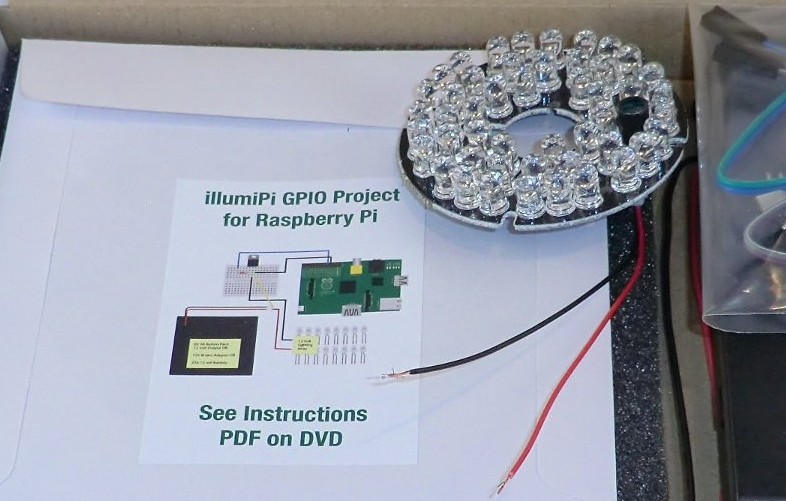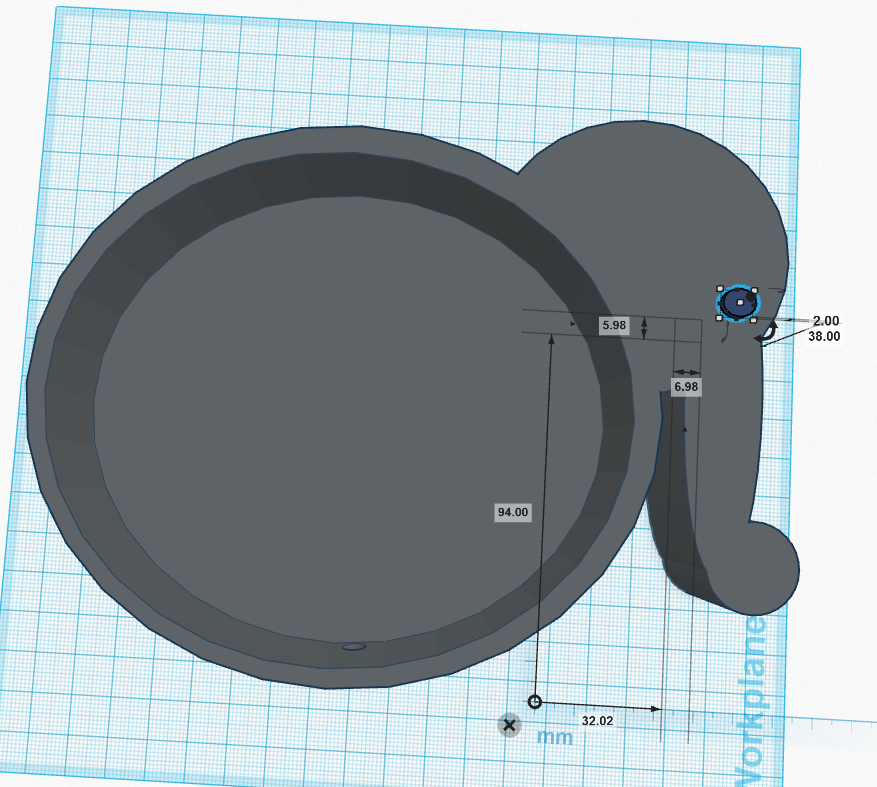-
ElephantAI
10/15/2017 at 19:07 • 0 commentsHi everyone! Don't forget to keep up with this project's new iteration! The ElephantAI! This is near to completion now and the build instructions for hardware and software are mostly all written up!
-
xpost from Elephant AI: Second results with object detector using Histogram of Oriented Gradients (HOG) and Linear Support Vector Machines (SVM)
03/24/2017 at 22:34 • 0 comments -
xpost from Elephant AI: object detector using Histogram of Oriented Gradients (HOG) and Linear Support Vector Machines (SVM)
03/23/2017 at 20:53 • 0 commentsFirst results with object detector using Histogram of Oriented Gradients (HOG) and Linear Support Vector Machines (SVM)
-
Migrating to Elephant AI
03/21/2017 at 21:34 • 0 commentsHi everyone! Thanks for following my project! I'm migrating it to Elephant AI now! This is for a new entry to the Hackaday 2017 prize! And it is a bit confusing too, as lots of my earlier plans for hardware and software here have been superseded! I can't believe I was thinking just histogram comparison or feature matching with FLANN would work!
You can find the Elephant AI project here -> https://hackaday.io/project/20448-elephant-ai
-
Detecting poachers
03/04/2017 at 21:04 • 0 commentsOne feature I am hoping to add to the elephant system is the capability to identify poachers. Obviously elephant detection devices will be in the correct place to spot them! But how can we train an image classifier to differentiate between good[!] people and poachers? What is distinct about a poacher? Well, it seems likely that poachers would carry a rifle ready for use when they are in the elephants' habitat! So is the difference between an image of someone carrying a rifle and someone not carrying a rifle enough to work with?
![]()
![]()
So looking at some of these images, it does seem kinda hopeful that we could differentiate between humans carrying rifles vs. humans not carrying them!
Source: NDTV videoOf course we need not work only with images to detect poachers! Once they fire their rifles we can 'easily' detect such a loud and distinct noise (unless it is raining heavily etc.). But that might not be so good because local people may be out hunting. Perhaps we could restrict poacher identification to night-time? I'm going to have a look thru literature on poacher behaviour to get a better idea.
** update regarding algorithms
I'm currently trying out TensorFlow with or without Keras. as a more promising alternative to OpenCV.
Just also, I'm not sure now about having one trained image classifier that would be used for every installation of the system. I think it would improve accuracy if we trained each system with a dataset of images obtained at that location.
-
Updates for Feb 2017
02/28/2017 at 22:31 • 0 commentsHi everyone,
I am currently working on reducing the false-positive detection rates by investigating other machine vision algorithms and training methods/image processing. I'm also studying deep-learning approaches to detection. And integrating auditory for a multi-modal approach to detection.
As concerns actuators: besides the the audio repelling using tiger and bee sounds, I am investigating using mechanical actuators in form of pneumatic weapons to fire chilli balls into the path of crop-raiding elephants. Obviously the mention of a weapon is off-putting, but these would not harm elephants, and taking human-elephant contact out of the situation entirely would be really risk-reducing to both species.
chilli pepper weapons inspired by ideas from the gearbox.co.ke makerspace
I'm also looking at how I could integrate poacher detection into the system. And steps we need to take to eliminate risk of this system being misused by poachers themselves (see: https://twitter.com/4nks/status/821056854558183424 )
-
Elephant-deterrent devices
10/17/2016 at 20:43 • 0 commentsInstead of waiting for the local people to arrive and scare the elephants away from their crop-raiding missions, possibly endangering themselves, and the elephants, this add-on device aims to automatically deter elephants! Making use of sounds that they associate with animals they dislike!
The two sounds which have previous experimental evidence for their efficacy in deterring elephants are: sounds of tigers and bees!
Wild Asian elephants distinguish aggressive tiger and leopard growls according to perceived danger http://rsbl.royalsocietypublishing.org/content/9/5/20130518
African elephants run from the sound of disturbed bees http://www.cell.com/current-biology/fulltext/S0960-9822(07)01718-6
Components
- HiFiBerry AMP+ (speakers: 25W, 4-8 Ohm; 12-18V 3A power supply) https://www.hifiberry.com/ampplus
- 2x 8 Ohm Magnetic Speaker 20W 100Hz ~ 10kHz Top Round, Square Frame 90dB http://www.digikey.co.uk/product-detail/en/cui-inc/GF1004H/GF1004H-ND/304448
- Raspberry Pi 3
- Power supply for HiFBerry AMP+
- Power supply for Raspberry Pi
- 3d-printed enclosure for device
- Box for battery
- XBee 2mW Wire Antenna - Series 2 (ZigBee Mesh)
- PowerBoost 500 Basic - 5V USB Boost @ 500mA from 1.8V+
- 6W 2V Solar Panel
This device will have a library of 200x10 minute duration audio clips (bees, tigers) to be selected pseudo-randomly (to prevent elephants becoming habituated to audio). The devices will be in range of the elephant-detection devices (for communication via RF using the XBee 2mW), and triggered by a simple yes/no message from the elephant-detection devices to begin their sequence of playing elephant-deterrent audio clips (bees or tigers).
-
Final log for the 2016 competition
10/09/2016 at 20:59 • 0 commentsThe elephant detection system will not be finished in time I'm afraid! The biggest problem towards the end was not being able to access elephants in order to obtain training images! The best training images would have come from the raspberry pi camera, which was not possible to do, since I had trouble getting access to elephants! So at the moment I'm working on https://hackaday.io/project/15685-automated-garden-wildlife-detection-project as a proof of concept, using common garden animals (e.g. cat, fox, hedgehog, mouse, rat, badger) instead of elephants. This will also allow me to devise an appropriate IR LED array, and work on switching between IR-filtered and noIR-filtered cameras depending on day/night. That was the second biggest problem!
-
Obtaining images of elephants at night!
09/23/2016 at 19:10 • 0 commentsI hadn't even thought what a problem this would be until now! Elephants tend to launch their crop-raiding missions under the cover of darkness! I'm sure you would too! I've come up with several possible solutions:
- Two raspberry pi cameras: one with an IR filter (for daylight) and one without an IR filter (for darkness)
- One raspberry pi camera: use an IR-filtered raspberry pi camera but trigger a flash at the same time
- One external camera: don't use a raspberry pi camera, but use an external camera with a flash instead
- One raspberry pi camera: use a raspberry pi camera with no IR filter and only detect elephants in darkness
I've narrowed this down to either solution 1 or solution 3. In fact, the 2015 hackaday prize had an entry for a pi camera multiplexer https://hackaday.io/project/2847-ivport-raspberry-pi-camera-module-multiplexer which can facilitate connection of both a raspberry pi IR-filtered camera, and a raspberry pi camera with no IR filter. We can decide which to use by employing a simple circuit with a photoresistor/LDR to determine if it's daytime or nighttime. However, we aren't going to see much at night without some infrared light. There are plenty of projects that have used IR LEDs for home security. But they are only designed for illuminating a human say 2-3m away from the LED array!
To obtain an image of an elephant 10-20m from the elephant-detection device will take something it bit more powerful. What I'm stuck with at the moment is using something like an 11W IR illuminator, such as show below, which is obviously going to be a big drain on batteries and add more to the cost!![]()
![]()
I'm not keen on solution 3, because using a flash will most likely result in elephants avoiding the elephant-detection device.
-
Enclosures for the elephant-detection devices
09/20/2016 at 19:15 • 0 commentsI've been trialling a variety of enclosures, ranging from ABS boxes, to waterproof lunchboxes, to 3d-printable or laser-cut designs. Which is in-keeping with my goal of providing plans so people can make the elephant-detection system as easily and cheaply as possible. These are some of the 3d-printable designs which I'm currently working on:
![]()
![]()
![]()
![]()
Obviously the elephant-shaped one is best!
Automated Elephant-detection system
Real-time machine-vision based detection of elephants in rural areas: providing warnings to locals and thus prevent human-elephant conflict
 Neil K. Sheridan
Neil K. Sheridan






